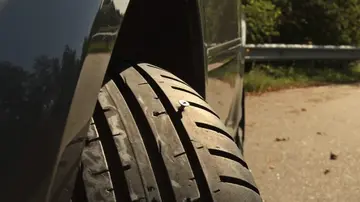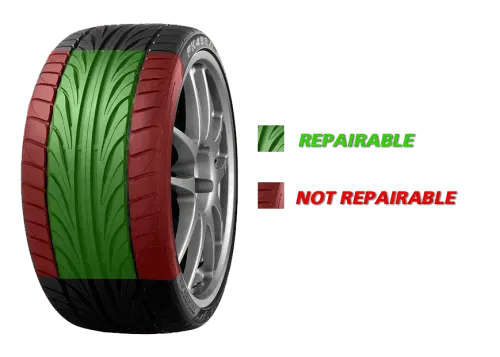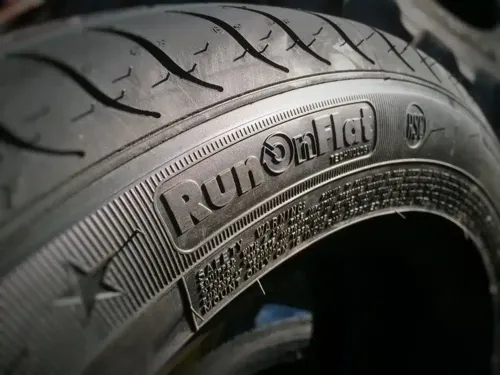How To Check If My Tyre Is Repairable?
Learn how to check if your tyre can be repaired or if it needs replacing.
Posted on

A flat or damaged tyre can be an inconvenience, but not every tyre issue means you need to replace it entirely. In some cases, a tyre can be safely repaired, saving you both time and money. But how do you know if your tyre is repairable or needs to be replaced?
In this blog post, we’ll walk you through the steps to determine whether your tyre can be repaired, the types of damage that can be fixed, and when it’s time to invest in a new tyre.
1. Understand the Types of Tyre Damage
Before deciding whether a tyre can be repaired, it’s important to identify the type of damage. There are three main categories of tyre damage:
- Punctures: Small holes caused by nails, screws, or other sharp objects.
- Cuts or Tears: Slices in the tyre caused by road debris or hitting curbs.
- Sidewall Damage: Damage to the side of the tyre, which is often more difficult to repair.
Each type of damage has different implications for repairability.
2. Location of the Damage
The location of the damage is a key factor in determining whether a tyre can be repaired. Most tyre punctures that occur within the tread area can be repaired, as long as the damage meets certain criteria. However, punctures or damage to the sidewall or the shoulder (the outer edge where the tread meets the sidewall) are generally not repairable due to the risk they pose to the tyre’s structural integrity.

- Tread Area: Punctures within the central three-quarters of the tread area are usually repairable. This is the part of the tyre that comes into direct contact with the road and can safely withstand repairs.
- Sidewall or Shoulder: Any damage to the sidewall or shoulder area cannot be safely repaired. The sidewall carries the weight of your vehicle and flexes while driving, so a puncture or cut here weakens the tyre’s structure, increasing the risk of a blowout.
Key Takeaway: Only punctures in the tread area, and away from the sidewall, are usually repairable.
3. Size of the Puncture
The size of the puncture is another critical factor in determining if your tyre can be repaired. Industry standards, such as those outlined by the British Standard BS AU 159, recommend that punctures up to 6mm in diameter can be repaired safely.
If the hole is larger than 6mm, the damage is considered too extensive for repair, and the tyre should be replaced. Larger punctures weaken the tyre’s structure and increase the risk of tyre failure, even after a repair.
4. The Depth of the Tread
Tyres with insufficient tread depth should not be repaired, even if the damage is repairable. The legal minimum tread depth in the UK is 1.6mm across the central three-quarters of the tyre’s width. If your tyre’s tread is below this limit, it’s unsafe to continue driving on, and repairing it will not restore its performance.
You can use a tread depth gauge or the 20p test to check your tyre tread. Insert a 20p coin into the tread grooves—if the outer band of the coin is visible, your tyre tread is below the legal limit, and the tyre should be replaced.
5. Condition of the Tyre
The overall condition of the tyre also plays a significant role in determining repairability. A tyre that has significant wear, visible cracks, bulges, or other signs of ageing is generally not safe to repair. These conditions indicate that the tyre is near the end of its lifespan, and repairing it would not be cost-effective or safe.
Signs that a tyre cannot be repaired:
- Cracks: Cracks on the sidewall or tread area indicate that the rubber is deteriorating.
- Bulges or Blisters: A bulge in the sidewall means the tyre’s internal structure has been compromised, and it cannot be safely repaired.
- Multiple Punctures: If a tyre has several punctures, even within the repairable area, it may be unsafe to repair.
6. Run-Flat Tyres: Can They Be Repaired?
Run-flat tyres are designed to allow you to continue driving for a short distance after a puncture. However, these tyres are more difficult to repair than standard tyres. Many manufacturers advise against repairing run-flats because the internal damage isn’t always visible. Driving on a flat run-flat tyre can cause unseen damage to the sidewalls, which compromises the tyre’s safety.
Always consult a professional if you’re considering repairing a run-flat tyre, but in most cases, replacement is the safest option.
Final Thoughts
Knowing how to check if your tyre is repairable can save you time and money while ensuring your vehicle remains safe on the road. As a general rule, punctures in the tread area that are smaller than 6mm can usually be repaired, while damage to the sidewall or large holes require tyre replacement. Always ensure that your tyres have sufficient tread depth and are in good overall condition before considering a repair.
If you’re ever unsure, it’s best to consult a tyre professional who can assess the damage and recommend the best course of action.









